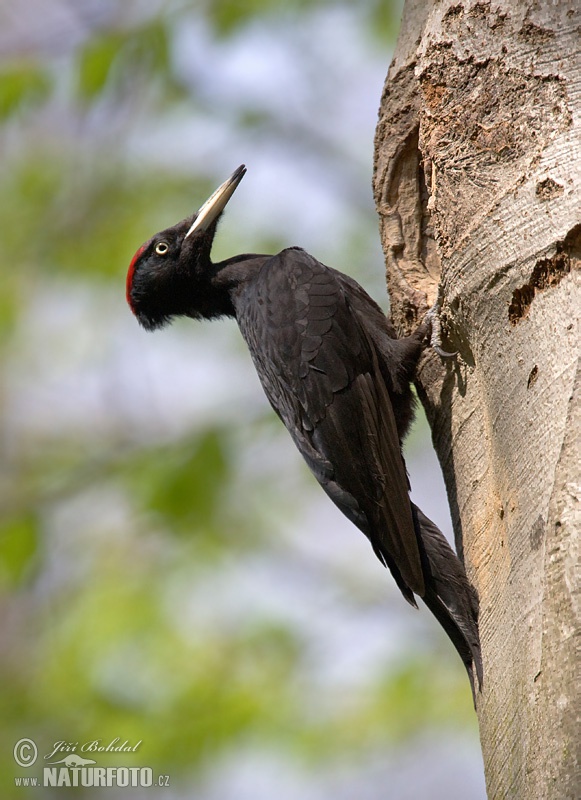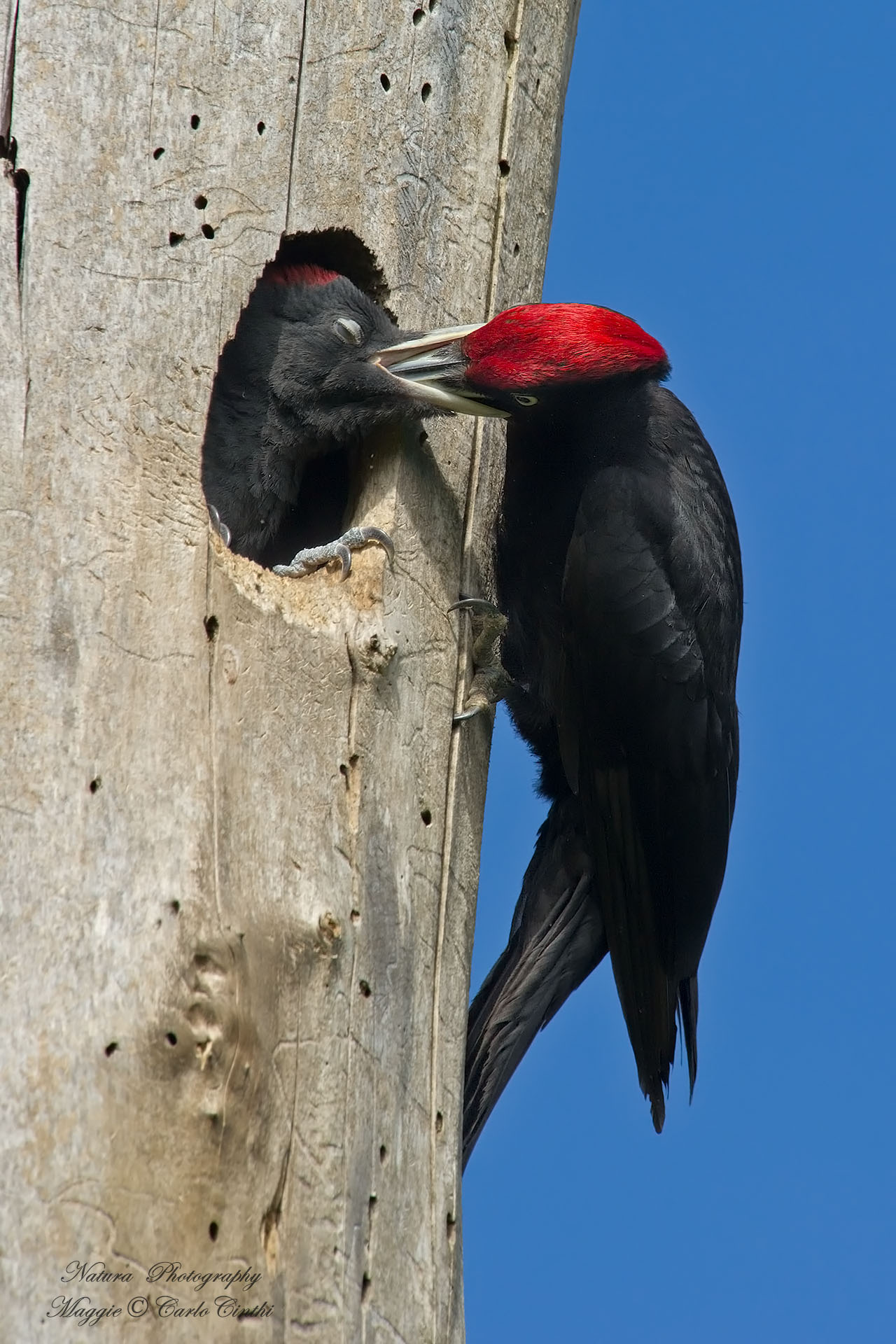

Nesting: 3-8 eggs, laid in a cavity of dead trunk, tree limb or even utility poles. Does well in suburbs, prefers deciduous trees. Habitat: Open woodlands, farmlands, orchards, shade trees and parks. They have a slightly reddish belly which gives them their name, although unless they are in the right position you’ll be hard pressed to see it! Dark red hood that extends from the beak down the neck in males, and only at the nape of the neck in females. Identifying markings: Barred and speckled black and white back, light breast. As farmlands began to decline and forests returned, the Pileated have made a comeback and seem to be adapting to younger forests and trees. Much of their habitat was lost in the early 18th and 19th century when logging took down most of the mature forests and forests were cleared to become farms.They prefer mature woods with old large trees. Sometimes they dig their holes so deep into the tree that they accidentally can snap small trees in half. If you’ve ever had the pleasure of seeing one go to work on a tree it is quite a sight with a spray of wood chips flying out like a stump grinder. These huge woodpeckers can excavate holes up to seven inches across.Interesting Facts about Pileated Woodpeckers Nesting: 3-8 eggs laid in cavities excavated from dead trunks or limbs of live trees. Location: Eastern half of the U.S., across most of Canada, northern half of west coast. Habitat: Mature forests with large trees. Males have a red “mustache”ĭiet: Ants and other wood-boring insects, some berries. Identifying markings: Mainly black with a red crest, black and white stripped face, white stripe down the neck, and white wing linings. Size: 16-19 inches (the largest North American woodpecker)

Dead or dying trees are often removed from land for firewood, to reduce fire hazard, discourage certain blight insects or simply for aesthetics. But this species in particular makes their nests solely in dead trees, a habitat which is quickly declining.

Unfortunately, they are in decline in many areas especially the Northeastern U.S. These woodpeckers are very territorial and will attack other birds and even remove other birds eggs from nearby nests. They’re often aggressive towards other woodpeckers or any birds that approach their nest.Interesting facts about Red-headed Woodpeckers Nesting: 4-7 eggs, inside cavities in dead trees or dead branches. Location: Eastern half of the US although much less common in New England. Habitat: Open woodlands, pine plantations, standing wood in beaver swamps, river bottoms, orchards, and swamps. They have even been found storing insects like grasshoppers in cracks of wood and under roof shingles! Unlike many woodpeckers they spend time perching and flying out to catch insects in-flight. These large patches of solid color are unlike most woodpeckers, who have more intricate patterns.ĭiet: Wood-boring insects and nuts which they are known to cache in the fall. Identifying markings: Adults have a bright crimson head, black back, large white wing patches and a white belly.
BLACK WOODPECKER HOW TO
In the below list of North American woodpeckers we’ll look at pictures, species information, how to identify them, and some interesting facts about each one. 17 Different Species of North American Woodpeckers There are over 200 types of woodpeckers in the world and at least 17 species in North America, and it’s those 17 woodpecker species that we’ll be looking at in this article. Woodpeckers are known for their powerful beaks, long tongues, sometimes flashy colors, and their excellent climbing skills. A versatile family of birds, and one of my personal favorites! Some live in forests while others live in the desert. While there are common characteristics the birds of the woodpecker family share, each species can be quite unique! They range from small to large and plain to colorful. Provenance The Duke of Devonshire, Chatsworth, England Thomas Thorpe, London, 1844 John Cassin, Philadelphia, 1869 M.Thomas & Sons, Philadelphia, 1872 Nathaniel H.There are many varieties of woodpeckers all across North America. oblong folios, formerly in the Duke of Devonshire's Collection"Įxhibition History “Big Bird: Looking for Lifesize,” New-York Historical Society, April 7 - June 11, 2017. Most of them are accompanied with their names, in 4 large vols. Markings Inside cover of Album 1 contains a printed catalogue description reading: "Drawings of European Birds, a Collection of upwards of 200 Drawings, most beautifully executed colours, of European Birds, taken from Nature, and most faithfully copied with a view to be published but from the death of the artists M. With text in French, Greek, and Latin including the following credits:Īt lower center: Le peintre. Inscribed Inscribed along left edge vertically: 52


 0 kommentar(er)
0 kommentar(er)
